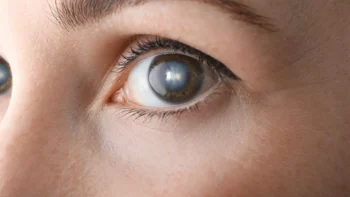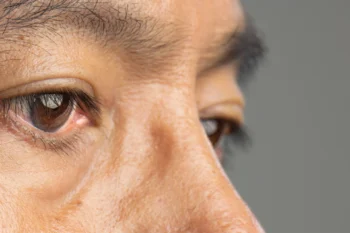Approximately one in three Americans experience eye problems by the age of 65. Visual impairment interferes with everyday tasks, but research shows that it can also put individuals at a higher risk of:
- Depression
- Cognitive decline
- Chronic disease
- Lower life expectancy
The most common eye problems are very treatable if detected early, limiting or preventing their impact on your daily life. The best way to maintain your vision is to visit your eye doctor for a routine exam every one to two years — and to watch out for the warning signs of these age-related eye conditions.
Cataracts
These cloudy eye clusters are extremely common in adults. Estimates show that about half of Americans will develop cataracts by age 75.
This is because our eye’s proteins break down naturally as we age and accumulate in small patches, obstructing vision. In advanced stages, cataracts form visible, cloudy areas on your eye. But early warning signs can indicate they’re beginning to develop, like:
- Needing stronger light or eyeglasses to see clearly
- Sensitivity to light, especially at night
- Experiencing “halos” around lights, double vision, or fading colors
Age-Related Macular Degeneration
The most common eye problem among older adults, age-related macular degeneration (AMD) impacts the central field of vision. It generally occurs as a result of fatty deposits collecting in the eye, blocking its ability to process light.
Vision impairment from AMD occurs slowly but can eventually limit your ability to read, drive, or even recognize faces. There are also no physical symptoms, but signs you may be developing AMD include:
- Distortion or blurriness in your central line of sight
- Straight lines appearing crooked or curvy
- Objects appearing smaller than they are
- Muted color perception
Retinal Detachment
The retina is a thin layer of eye tissue that processes light. A small tear or fluid build-up can cause this tissue to pull away from the rest of the eye. If not treated quickly, retinal detachment can result in permanent vision loss.
Signs of retinal detachment often occur suddenly. Contact an eye specialist right away if you experience:
- The appearance of many new “eye floaters,” or small, drifting specks in your field of vision
- A curtain-like shadow obstructing your eyeline
- Flashes of light
Glaucoma
Interocular pressure refers to the eye’s fluid balance — and if it’s disrupted, an increase in pressure can damage your optic nerve. This process behind glaucoma is often gradual but can lead to permanent vision loss without treatment.
An eye exam can point to optic nerve damage or irregular fluid pressure even if no physical symptoms are present. You should schedule an appointment with your doctor if you experience signs of the condition’s advancement, such as:
- Changes in your peripheral vision or, in more serious cases, tunnel vision
- Blurred vision or seeing rainbow-like rings
- Rapid onset of eye pain, tenderness, and headaches
Some people are more at risk for developing glaucoma as they age, including those who have diabetes or a family history of the eye disease.
Other Common Eye Problems
Other conditions can also impact our vision as we age. To mitigate eyesight issues, speak to your doctor if you notice:
- Dry, irritated eyes that could indicate dry eye syndrome
- Double vision, also known as diplopia
- Blind spots associated with diabetic retinopathy
- Red, watery, or painful eyes that can result from cornea damage
- Severe headaches, tenderness around the temples, or painful chewing associated with temporal arteritis
Regular visits to your optometrist can help identify eye problems early, enabling you to get treatment and avoid permanent damage. Get in touch with us at Brimhall Eye Center to schedule an appointment. We’ll help you optimize your eye health, ensuring you maintain strong vision as you age.





